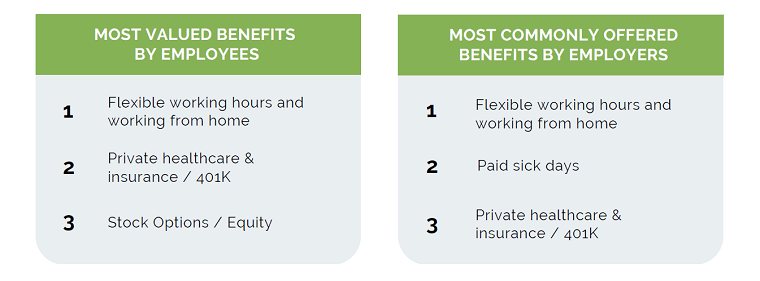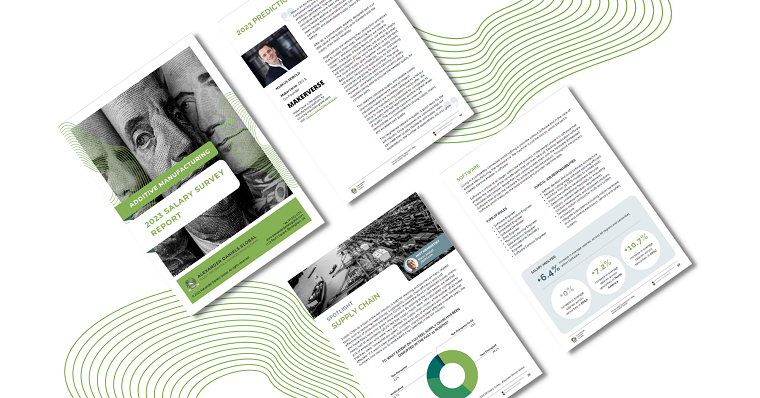Additive manufacturing has been a rapidly growing industry in recent years, with applications ranging from aerospace and automotive to healthcare and consumer goods. As the industry continues to expand, the demand for skilled talent has also increased, with the 2023 AM Salary Survey Report from Alexander Daniels Global reporting that the AM talent pool grew across the USA & Canada, EMEA and APAC throughout 2022 by 17.6%, 27.3% and 23.6% respectively, resulting in a candidate to job ratio of 21:1 for 2023.
However, alongside this growth in the talent pool, it has been a relatively tumultuous period in recent months, particularly for Talent; and while much of this has been subject to consolidation of companies, investments, and restructures, it has caused a level of uncertainty in the industry, with professionals left wondering if it’s worth remaining in this sector right now.
Talent Landscape
The talent landscape in the additive manufacturing industry is characterized by a shortage of skilled workers and has been for many years. According to a survey conducted by Deloitte in 2020, 89% of manufacturing executives in North America reported a moderate to severe shortage of skilled talent. Similarly, a survey conducted by Ultimaker in 2019 found that 43% of European companies cited a lack of skilled talent as a major barrier to implementing 3D printing technology, while more recent data from Deloitte suggests that even though employment in the manufacturing space is at its highest ever, the industry remains significantly short of skilled workers.
This shortage of skilled talent is driven by several factors, including the rapid pace of technological innovation, a lack of standardized education and training programs, and a lack of awareness and understanding of the technology among students and educators, though educational institutions are working towards improving this situation. To address this shortage, industry leaders are investing in training programs for professionals, partnering with educational institutions, and offering competitive salaries and benefits to attract skilled individuals to their organizations.
Namely, AM Talent have highlighted flexible working hours and work from home options, private healthcare and/or health insurance, and stock options or equity as the top 3 attractive benefits that they would like to see included in their compensation packages (2023 AM Salary Survey Report, Alexander Daniels Global). Luckily, this is also what AM Employers are most often including in their compensation packages for Talent, with the exclusion of stock options or equity, which is instead replaced by relocation support or other cultural perks such as lunch vouchers or gym memberships etc.

Retaining Talent in the industry is increasingly important as we start to see the traditional lines between AM and general manufacturing blurring. In contrast to recent years, the annual salary survey report highlighted a shift in what will motivate talent to change jobs in 2023. Where, historically, ‘Career Progression’ has been the main motivator for Talent to change jobs, this year ‘Salary’ reclaims the top spot, with 72.8% of survey respondents claiming that this is now their primary motivator, showing Employers that salary competitiveness should be at the forefront of Hiring Managers’ minds.
Hiring Landscape
This year’s AM Salary Survey Report found that there are actually fewer opportunities for professionals in AM this year – most notably, ADG has recorded a 57.7% reduction in opportunities across North America, Canada, and EMEA when comparing with the previous year. We can therefore expect the jobs market to be relatively competitive for Talent, particular in the first half of 2023. However, as was mentioned in another recent article published on 3DPrint.com, investment in the industry doesn’t seem to have slowed for Seed to Series A/B funded organizations, meaning that professionals may find more favorable job-hunting conditions in growing start-ups and scale-ups.
In addition, despite the ongoing shortage of skilled talent, the additive manufacturing industry has continued to grow, with companies across North America and Europe reporting strong demand for 3D printing services and products. This growth has led to a consistent demand for hiring, with companies seeking to fill a wide range of roles, including increased demand this year for application engineers, field service engineers, software engineers and designers, and sales and marketing professionals (2023 AM Salary Survey Report).
The report from Alexander Daniels Global also estimated the number of professionals working in the industry, or with experience with AM technologies, to be 434,000 worldwide as of 2023. This is quite a significant increase from the COVID-era where the Talent market experienced significant stagnation. However, with the decrease in opportunities, we may see Talent abandoning ‘pure’ AM for opportunities in vertical markets or in general manufacturing, something which could temporarily destabilise the overall talent market within manufacturing, ultimately finding an equilibrium in the market further in the future.
This is where it will become increasingly important for Employers to invest in retaining Talent. According to Deloitte’s most recent Manufacturing Industry Outlook report, 1 in 3 Manufacturing Executives have highlighted ‘retaining high-performing employees’ as a strategic priority in 2023.
Part of this will be related to keeping up with the trends in the industry, such as the evolution towards AM’s integration into the wider digital manufacturing landscape. In fact, manufacturers have increased their digital investment over the past few years and accelerated the adoption of emerging technologies, such as 3D printing, which will play a significant role in enabling digital manufacturing. Companies with higher digital maturity have shown greater resilience, as did those that accelerated digitalization during the pandemic. These companies were able to react faster to the changing macroeconomic landscape, than manufacturers with limited digital capabilities. Similarly, companies with higher digital implementation tend to have increased supply chain visibility and are better able to adapt to supply chain challenges, as was shown in data collected for the 2023 AM Salary Survey Report. Continued investments in advanced manufacturing technologies can help develop the required agility to move this industry into the next phase of development, and businesses that invest in this are more likely to experience growth, and therefore increased job opportunities for Talent in future.
Regional Differences
While the talent and hiring landscape in the additive manufacturing industry is similar across North America and Europe, there are some regional differences worth noting. For example, the Deloitte survey found that the shortage of skilled talent was more severe in the United States than in Canada, with 92% of U.S. manufacturing executives reporting a moderate to severe shortage of skilled talent, compared to 82% in Canada.
In Europe, the 2021 Ultimaker survey found that companies in Germany, the United Kingdom, and the Netherlands were leading the way in implementing 3D printing technology, with 60% of German companies, 50% of UK companies, and 47% of Dutch companies using the technology. These countries also reported the highest levels of investment in 3D printing technology and training programs.
Aside from the knowledge that salaries in the US are, on average, much higher than in Europe, the 2023 AM Salary Survey Report also revealed that despite geopolitical and supply chain issues that struck the globe over the last year, the US and Canada saw salary increases across the board by 12.5%, while in Europe, professionals saw significant stagnation, with salaries across the board decreasing by 2.6% as a result. This further supports what the Deloitte report suggests about the shortage of Talent in the US being a significant issue, prompting Employers to provide increasingly attractive compensation packages to attract and retain high-skilled Talent.
To Summarise
The adoption of additive manufacturing technologies across various vertical markets is driving the evolution of digital manufacturing, leading to growing opportunities for employment for professionals with advanced manufacturing and additive manufacturing skills and experience. As the industry continues to grow and evolve, the demand for skilled professionals in additive manufacturing is expected to rise, making it a promising field for those looking to pursue a career in advanced manufacturing.
You can get more information on the AM job and talent market by downloading the 2023 AM Salary Survey Report from Alexander Daniels Global.

Subscribe to Our Email Newsletter
Stay up-to-date on all the latest news from the 3D printing industry and receive information and offers from third party vendors.
You May Also Like
3D Printing Financials: Fathom Struggles in Financial Quicksand During Critical Transition
Facing a year of key transitions and financial pressures, Fathom (Nasdaq: FTHM) has filed its annual report for 2023 with the U.S. Securities and Exchange Commission (SEC). The document outlines...
Latest Earnings Overview for Australian 3D Printing Firms Titomic and AML3D
Australian 3D printing manufacturing firms Titomic (ASX: TTT) and AML3D (ASX: AL3) reported their financial results for the period from July to December 2023, marking the first half of their...
3D Printing Webinar and Event Roundup: April 7, 2024
Webinars and events in the 3D printing industry are picking back up this week! Sea-Air-Space is coming to Maryland, and SAE International is sponsoring a 3D Systems webinar about 3D...
3D Printing Financials: Unpacking Farsoon and BLT’s 2023 Performance
In the Chinese 3D printing industry, two companies, Farsoon (SHA: 688433) and Bright Laser Technologies, or BLT (SHA: 688333), have recently unveiled their full-year earnings for 2023. Farsoon reported increases...































